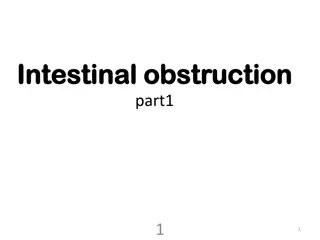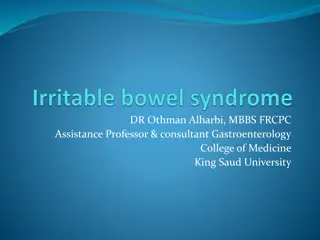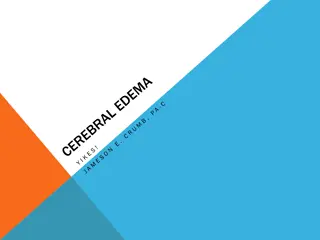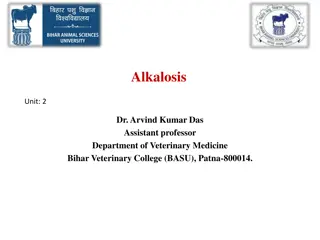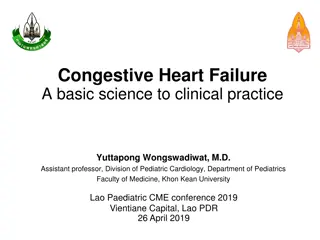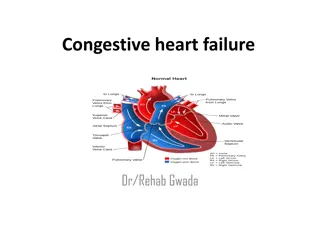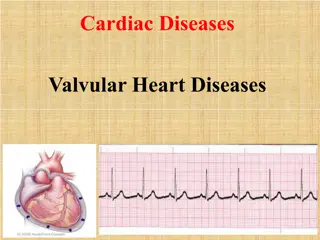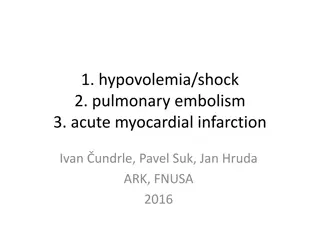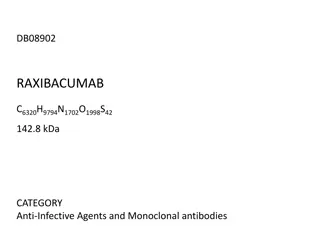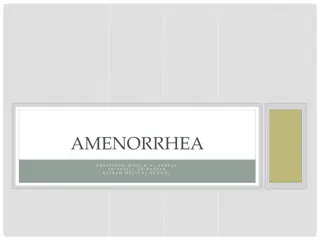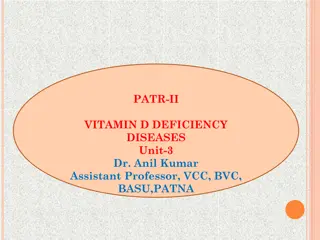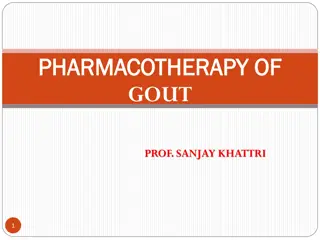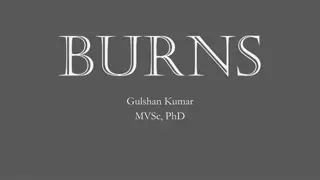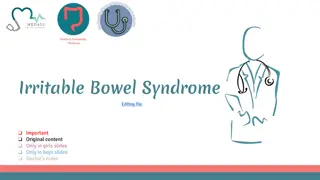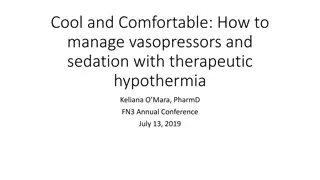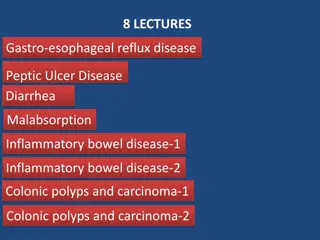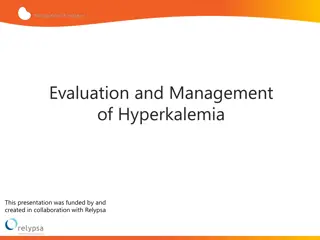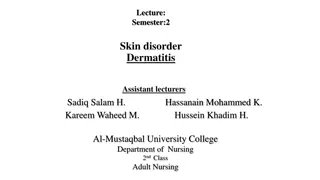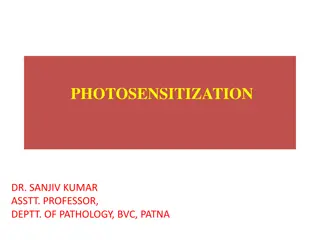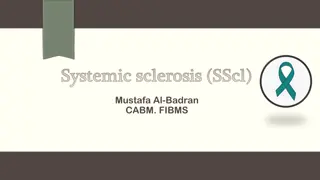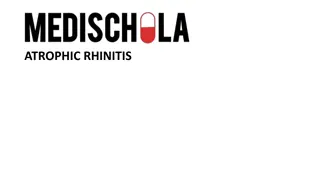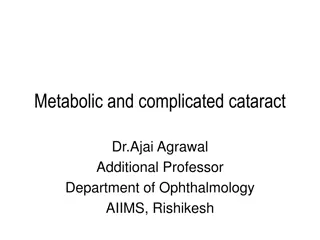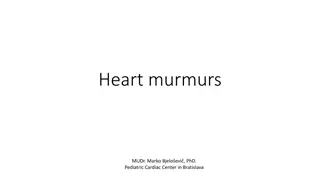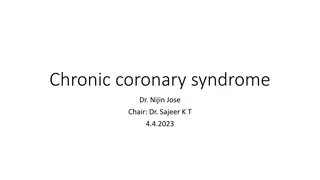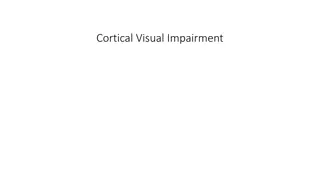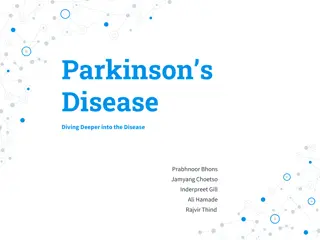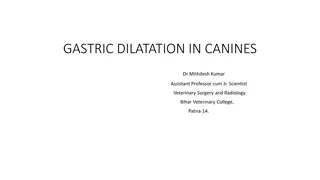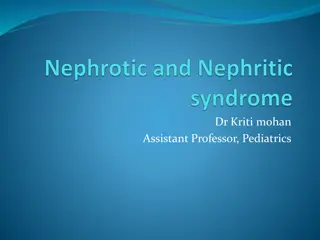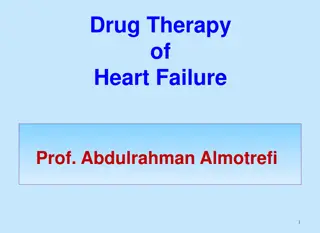Understanding Pruritus: Causes, Types, and Pathophysiology
Pruritus, commonly known as itching, is a prevalent dermatological concern that can occur due to various factors, including underlying skin conditions, systemic diseases, medications, and neurological disorders. Primary and secondary pruritus are distinguished based on their origin. The sensation arises from the activation of sensory nerve fibers at different levels of the nervous system. Localized pruritus may present with or without visible skin manifestations, requiring careful evaluation for appropriate diagnosis and management. Common dermatological diseases associated with pruritus include eczema, psoriasis, infections, and autoimmune connective tissue disorders.
Download Presentation

Please find below an Image/Link to download the presentation.
The content on the website is provided AS IS for your information and personal use only. It may not be sold, licensed, or shared on other websites without obtaining consent from the author. Download presentation by click this link. If you encounter any issues during the download, it is possible that the publisher has removed the file from their server.
E N D
Presentation Transcript
Pruritus DR. Anwar Issa Hasan 25/11/2018
pruritus Pruritus : is unpleasant sensation elicit desire to itch or scratching. Pruritus is most common dermatological complaint. In general pruritus classify in to : Primary pruritus (idiopathic). Secondary pruritus: result from underlying primary dermatological disease or systemic disease, Its most common type.
Pruritus Pruritus could be localized or generalized. Pruritus can present with or without cutaneous manifestation. Localized pruritus without cutaneous manifestation : consider neuropathic itch &dysesthesia or psychogenic pruritus. Localized pruritus with cutaneous manifestations: Eczema(LSC) LICHEN PLANUS. PEDICULOSIS. DERMATITIS HERBETIFORMIS. Causes of secondary pruritus: Dermatological disorders Allergic or hypersensitive syndromes. Medication. Toxins associated with kidney and liver diseases. Neurological disorders. Systemic disease & Malignancy. Psychiatric conditions. 1. 2. 3. 4. 1. 2. 3. 4. 5. 6. 7.
PATHOPHISOLOGY OF PRURITUS Pruritus result from activation of sensory nerve fibers at four sequential levels: 1. Peripheral nervous system: sensory nerve fibers at dermoepidermal junction, type C- fibers (small, slow, unmyelinated nerve fibers) 2. Dorsal root ganglia. 3. Spinal cord : ascending in spinothalamic tract. 4. Brain; thalamus and cortical level.
PATHOPHISOLOGY OF PRURITUS Itching or scratching may either cause: 1. Inhibition of itch receptors by stimulation of ascending sensory nerve fibers witch inhibits itch at spinal cord. 2. Scratching interfere with itch fibers lying superficially in skin which may damaged directly by scratching . Pruritus receptors units: removal of epidermis abolishes the perception of itch, so pruritus receptor unit located predominantly at this layer, LM.EXAMINATION show intraepidermal free non-specialized nerve ending in the granular layer( sub class of C-fiber),contain receptors that mediated itch .
Causes of pruritus Common dermatological disease with generalized pruritus as major symptoms: 1. Infestation: scabies, pediculosis & arthropod bites. 2. Inflammation: Eczema(AD,SD,CD),psoriasis, LP, urticaria, bullous diseases (BP)& drug eruption. 3. Autoimmune connective tissue disease: dermatomyositis & SLE. 4. Infections: bacterial (folliculitis),viral (varicella),fungal(tinea). 5. Neoplastic :cutaneous T cell lymphoma. 6. Others: Xerosis & pregnancy dermatoses. o g o
Causes of pruritus Common skin disease with localized pruritus: 1. LSC & NUMMULAR ECZEMA. 2. LP. 3. DH. 4. PEDICULOSIS. Common body sites affected by localized pruritus: 1. Vulva. 2. Anal region: Oxyuriasis, LSC, CD , SD, anal discharge (fissure, sinus or piles). 3. Perineum. 4. Scalp: pediculosis, dermatoses (psoriasis, SD ) 5. External auditory canal.
Causes of the pruritus vulvae Common problem, affected girls : Extravaginal causes: Intravaginal causes:usualy in adult women 1. Candidiasis. 2. LSC. 1. Candidiasis. 3. Pediculosis pubis. 2. Trichomoniasis. 4. Oxyuriasis. 3. Bacterial vaginosis. 5. Others:LP,l lichen sclerosus atrophicus(LSA). 4. Atrophic vaginitis in old women. 6. Idiopathic.
Pruritus secondary to systemic diseases 1. Liver disease: primary biliary cirrhosis ,HCV & HBV ,obstructive jaundice, pruritus result from cholestasis &increase of serum bile salt ,but severity of itch not directly correlated with bilirubin level. Central opioids effects. 2. Chronic renal failure: itching common in patients undergo dialysis, sever ,refractory to the treatment, improved after dialysis section. Mechanism :multifactorial, including Increase in the serum urea level. Xerosis. Secondary hyperparathyroidism( hypocalcemia) . Increase in the mast cell & serum histamine level. Central opioids effects.
Pruritus secondary to systemic diseases 3. Hematological disease: iron deficiency anemia , Polycythemia rubra Vera, Leukemia (CLL), lymphoma & myeloma. 4. Endocrine diseases: Thyroid disease: hyper & hypothyroidism (xerosis ). Diabetes mellitus: usually localized ,xerosis may cause. Pregnancy : at 3rdtrimester. 5. Malignancy: most common in Hodgkin's lymphoma( 30% of patients, may antedate other symptoms by years), other carcinoma e.g. breast & pancreatic CA. 6. HIV infection: mechanism unknown, may associated with eosinophilia. 7. Psychogenic :diagnosis by exclusion.
Primary (idiopathic) pruritus Pruritus with no evidence of skin disease ,usually result from underlying systemic disorders ,but in the absent of any systemic abnormality then its consider idiopathic pruritus, in Chronic idiopathic pruritus ,patient should undergo serial examination ,because pruritus ante date other symptoms of disease by long period example lymphoma & bullous pemphigoid . Pruritus with no clinical signs could be result from mild degree of skin dryness (frequent use of soap ,prolong bath & irritation) ,many of these patients incorrectly put in systemic cause of pruritus. Aquagenic pruritus: itch provoked by cooling of skin after emergence from bath could be idiopathic or PCV (after hot shower),continue for one hour.
Management of pruritus History taken (see table). Cutaneous and general examination. Investigation: all patient with pruritus ; 1. CBC: eosinophilia ( worm infestation), anemia, polycythemia,RBS,serum iron & ferritin 2. ESR: low in PCV, high in malignancy. 3. Renal function test ; blood urea& serum creatinine. 4. Liver function test: alkaline phosphatase& bilirubin. 5. Lactate dehydrogenase (LDH). 6. Thyroid function test :TSH & thyroxin level. 7. HIV TEST. 8. GSE & GUE.
Treatment of pruritus 1. All types: lukewarm baths with nonsaop cleansers, moisturization skin while still damp (ointment rather than creams), moisturization at am & before bedtime avoids woolens & harsh fabrics & keep nails cut short. 2. Treatment underlying dermatological condition. 3. Idiopathic pruritus: Topical: low potency CS, cooling agents( menthol, camphor) & Capsaicin. Systemic :antihistamine ,nonsedative at am & sedative at pm e.g, Doxepin 10-25mg at bedtime. Thalidomide in chronic refractory cases & CA patient: central sedative effects. 4. Opioid antagonists:1stline in pruritus result from liver & renal diseases e.g.Naltrexone & Nalfuraline(renal itch).
Treatment of pruritus 5. Antidepressants : 1stline psychogenic pruritus & PCV, e.g Amitriptyline &fluoxetine. 6. Others: colysteramine , activated charcoal(liver & renal disease)&Gabapentin( central sedation). 7. Photo therapy:UVB orPUVA 8. Acupuncture. 9. Psychological intervention.


